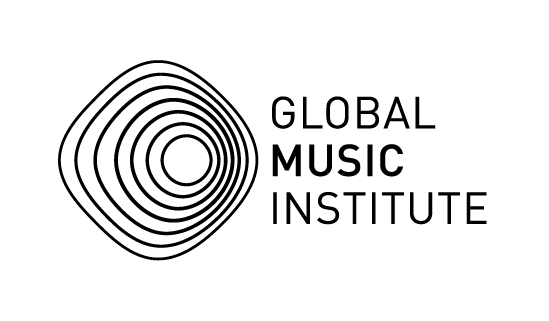
24 Apr Q’tine Feed: Curated by Suvani Suri (Week 1)
Weekly Round Up: 24 Apr 2020
One of the key elements of the Performance Programs at GMI are the interdisciplinary studies. The course on Music & Arts Studies led by Suvani Suri is aimed at situating music within a larger framework of artistic intellect, creation and expression. Through weekly seminars and workshops, students are led to understand the historical, cultural, social and philosophical contexts for various kinds of music and art.
Ever since we moved our ongoing term online, one of the essential focal point for us has been to stay connected with our community. Amidst the ongoing flux, one of the initiatives that Suvani took on was to share a daily e-mailer with the students to keep everyone inspired and curious! The intent is to look at intersection of music with different forms of creative expressions and draw ideas and inspirations from some of the most quirky, innovative and unique projects and individuals.
We have been sharing these on our social media handles on regular basis with everyone with the hope that it may spark some light within you. We hope you have been enjoying these feeds as much as we have been in curating them for you.
Here’s a round up of the feed unto 24 Apr 2020
15/04
Sound Taxi/ Yuri Suzuki
One of the experiences that marks our ongoing moment is the quiet that our cities had nearly forgotten. Though the silence that engulfs us now often does feel ominous and heavy, yet it has also made way for a hearing of a different kind, a stark (and welcome!) contrast from the familiar urban soundscape of rumbling traffic, blaring horns, construction work and the daily din, that we had grown habituated to.
This brings us to the question–
How have artists sought to address concerns around the increasing noise levels of our cities?
Sound Taxi is a cab designed by Yuri Suzuki that converts the sounds of the streets it tours, into real-time music for the passengers sitting inside and for the world outside. Partly inspired by Salvador Dali’s Rainy Taxi, the taxi is plugged with a microphone on the outside to record the hustle of the city. This is then fed into a generative setup to translate the streetscapes into live electronic rhythms that are blasted back at the world.
–––––
16/04
The Art of Noise/ Luigi Russolo
When we speak of the quiet that has descended upon our neighbourhoods, towns and cities, we implicitly create a category of ‘disquiet’ to which we relegate the sounds of our urban environments, industry, human movement, activity, machines and technology. Often (and loosely) labelled as noise, a term that has come to imply ‘unwanted sound’.
But…what is noise really?
Is the concept of noise to do with loudness, suddenness, irregularity or tunelessness? Is it a sonic ‘intrusion’ from the outside or are we always, already in a sea of noise? Is it confined to affect or sensation? Why is it attached to the binaries of meaningful and non- meaningful, the desirable and undesirable, and the musical and non-musical. Or does it, in fact, occupy the spaces in between–both obvious and obscure.
Perhaps the question ‘What is Noise’ is akin to asking ‘What is Time’ to which one might answer
‘I know exactly what it is until someone asks me’!
“Noise slips between different disciplinary fields: it carries through the walls that separate science, acoustics, economics, politics, art, information theory and law. And what constitutes noise can vary considerably between these fields. It could be said, then, that noise is a ‘noisy’ concept: it is messy, complex, fleeting, fuzzy-edged and, at times, infuriating.”
~Marie Thompson, Beyond Unwanted Sound
More than a century ago, Luigi Russolo, a member of the Italian Futurists, was dabbling with some of these ideas. He argued in 1913 for an ‘Art of Noises’, published a manifesto by the same name, that insisted upon the opening up of musical instrumentation, composition and performance to include the infinite range and forms of noise borne of the urban and industrial soundscapes. 
Putting these concepts into practice, Russolo designed and built a number of noise-generating machines called the Intonarumori. A first of its kind concert, held in April 1914, that included his noise instruments, ended up enraging the audience to the point of, literally, causing a riot!
Russolo’s notions of ‘noise music’ set the stage for a wave of experimentation that continues till date, in contemporary art and music.
–––––
20/04
A Sonic take on the Coronavirus
The ungraspable and mysterious reality of the Coronavirus has been provoking a great rush of images, views, and visual representations, in an urgent desire for meaning. The obscurity of the microbe has been given the shape of memes, cartoons, illustrations, 3d renders, quirky products and even headgear that cops seem to have taken a great liking to!
Meanwhile, elsewhere, there was someone thinking of the question–
what could the virus possibly sound like?
At the onset of the pandemic, Markus Buehler, an engineering professor and musician at MIT explored the idea of assigning a unique note to each amino acid that creates the protein structure of the virus. What this creates, using computation and algorithmic mapping, is a musical representation or ‘sonification’ of the virus itself.
 In translating the complex structure of the microorganism into an abstract score, what becomes apparent is the absurd contradiction between what is unseen and unknowable and yet is everywhere and palpable.
In translating the complex structure of the microorganism into an abstract score, what becomes apparent is the absurd contradiction between what is unseen and unknowable and yet is everywhere and palpable.
Haunting and mesmerizing, at the same time, the lush rhythms and interweaving melodies ebb and flow through the course of nearly two hours, revealing intriguing patterns and filling up our silence in an eerily comforting way.
You can read more about the thinking and process behind the work in an interview with the artist here, and listen to the composition The Viral Counterpoint here.
–––––
21/04
Sound as Sculpture/ Zimoun
Order and chaos in natural and artificial systems is a theme that has been explored by artists in diverse mediums, across time spans and contexts. Zimoun is one such artist who chooses to embrace these oppositions by giving them the form of spatial installations and sound sculptures.
A self-taught artist from Switzerland, Zimoun combines commonplace objects, sensors, speakers, microphones, and mechanical components such as motors, into simple repetitive assemblies. Once these autonomous modules run, they create reverberant sonic environments that demonstrate the rhythmic order constructed from the disorder of many individual random events.
His constructions are minimalist and immersive. The solitary motions generate a collective loop of acoustic hums, that are almost hypnotic, with each deviation setting off its own pattern that pours effortlessly into the larger whole.
 “I see my work as playing with and between contradictions. For instance, the artificial systems behave somehow organically. There is precision on the one hand, but on the other, it’s all handmade and somehow imprecise, not like something produced by a machine. Then there’s the simplicity of the systems, mechanics, and ideas, which generates complexity based on the sounds and motions. A loop (since the motors are just rotating) gives rise to ‘never-really-repeating’ sound structures. Another contradiction is between mass and individuality—there are hundreds of the same motors, but they become individuals when they act. Some seem to be lazy, others very busy, and some behave strangely.”
“I see my work as playing with and between contradictions. For instance, the artificial systems behave somehow organically. There is precision on the one hand, but on the other, it’s all handmade and somehow imprecise, not like something produced by a machine. Then there’s the simplicity of the systems, mechanics, and ideas, which generates complexity based on the sounds and motions. A loop (since the motors are just rotating) gives rise to ‘never-really-repeating’ sound structures. Another contradiction is between mass and individuality—there are hundreds of the same motors, but they become individuals when they act. Some seem to be lazy, others very busy, and some behave strangely.”
~Zimoun, interview to the Sculpture Magazine (April, 2013)
–––––
22/04
Stuck in a Loop
Routine and repetition seem to have taken on an all-new meaning in our locked-down lives. As ‘eat, sleep, work (or not), repeat’ becomes the order of the day, one is reminded of choreographer Pina Bausch’s words–
”Repetition is not repetition…the same action makes you feel something
completely different by the end.”
It is this profound idea that is found in the music videos by acclaimed filmmaker Michel Gondry, for artists such as The White Stripes, The Chemical Brothers, Bjork, The Rolling Stones, Beck and many others.
Michel Gondry is known for his quirky and uniquely experimental visual style that can be seen in films such as Eternal Sunshine of the Spotless Mind, Be Kind Rewind, to name a few. This video by Polyphonic deconstructs the visual themes of repetition and recursion employed in some of Michel Gondry’s legendary music videos.
–––––
23/04
Breakfast Frequency
For a lot of us, who are quite used to having friends and folks around to share our mealtimes with, it could be strangely unsettling to now shift to a routine of solo lunches, breakfasts and dinners.
Brian Foo, a new media artist, was thinking of this experience of shared mealtimes when he decided to design an ingenious online radio that tunes into his friends’ brekkie routines.
On the trigger for him to develop this project, Brian Foo, writes–
“As an occasional break from listening to news or music, wouldn’t it be nice to have a radio where we can occasionally tune into each others’ morning breakfast sounds? Not to snoop or scrutinize but to remind ourselves that, between social gatherings and before we put on our public face, we all share in sometimes-overlapping, mundane, and necessary morning routines.”
You can tune in to his live radio feed here.
–––––



No Comments